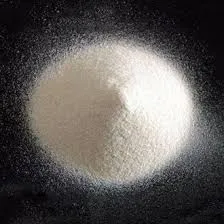
Nov . 29, 2024 14:18 Back to list
Exploring the Properties and Applications of Cellulose Ethers in Various Industries
Understanding Cellulose Ethers Properties, Applications, and Benefits
Cellulose ethers are a group of organic compounds derived from cellulose, which is one of the most abundant natural polymers found in plants. These compounds play a crucial role in various industries, including pharmaceuticals, construction, food, and personal care products. Their unique properties, such as water solubility, thickening, and gel-forming capabilities, make cellulose ethers invaluable in a wide array of applications.
Overview of Cellulose Ethers
Cellulose ethers are produced by chemically modifying cellulose to create derivatives with distinct functional groups. The most commonly known cellulose ethers include hydroxypropyl cellulose (HPC), hydroxyethyl cellulose (HEC), methylcellulose (MC), and carboxymethyl cellulose (CMC). Each of these ethers possesses unique characteristics tailored to specific uses. For example, HPC is known for its excellent solubility in water and ability to form films, while CMC is widely used as a thickening agent due to its gel-forming abilities.
The modification process involves the substitution of hydroxyl groups in the cellulose molecule with ether-forming groups. This alteration enhances the solubility of cellulose in water, enabling it to function effectively in various applications. The degree of substitution, along with the molecular weight of the cellulose, influences the properties and applications of the resulting cellulose ether.
Properties of Cellulose Ethers
Cellulose ethers exhibit several properties that make them highly desirable for industrial use. One of the most important characteristics is their ability to dissolve in water, creating viscous solutions. This feature is particularly beneficial in applications requiring viscosity modification. Additionally, cellulose ethers are biocompatible and non-toxic, making them safe for use in food and pharmaceutical products.
Another significant property of cellulose ethers is their thickening ability. When added to aqueous solutions, they increase the viscosity, which helps stabilize emulsions and suspensions. This quality is crucial in many formulations, including creams, lotions, and gels used in personal care products. Moreover, cellulose ethers can enhance the texture and mouthfeel of food products, making them an essential ingredient in the food industry.
Applications of Cellulose Ethers
cellulose ether

1. Pharmaceuticals In the pharmaceutical industry, cellulose ethers are utilized as excipients in the formulation of tablets and capsules. They help in controlling the release of active ingredients, ensuring proper dosage and absorption. Additionally, their viscosity-enhancing properties aid in the formulation of liquid medications.
2. Food Industry Cellulose ethers are widely used in food products as stabilizers, thickeners, and emulsifiers. They improve the texture and consistency of sauces, dressings, and frozen foods. Moreover, their ability to retain moisture helps in extending the shelf life of various products.
3. Construction In construction, cellulose ethers are added to cement and plaster formulations to improve workability and water retention. This application enhances the adhesion of these materials and improves the overall durability of the structures.
4. Personal Care Products Many cosmetic and personal care formulations, such as shampoos, conditioners, lotions, and creams, incorporate cellulose ethers due to their thickening and stabilizing properties. They enhance the product's viscosity, providing a desirable texture and consistency.
Environmental and Economic Benefits
From an environmental perspective, cellulose ethers are derived from a renewable source—plant cellulose. This natural origin contributes to the sustainability of products that utilize cellulose ethers. Furthermore, the biodegradability of cellulose ethers reduces environmental impact compared to synthetic polymers.
Economically, the use of cellulose ethers can lead to cost savings in formulations due to their multifunctional properties. Their capacity to serve as thickeners, stabilizers, and emulsifiers reduces the need for multiple ingredients, streamlining production processes.
Conclusion
Cellulose ethers represent a versatile and essential component in many industries. Their unique properties, ranging from thickening and emulsification to biocompatibility, make them suitable for a wide array of applications, including pharmaceuticals, food production, construction, and personal care. With ongoing research and development, the future of cellulose ethers looks promising, as manufacturers continue to explore their potential in innovative formulations and sustainable practices. As industries seek more eco-friendly and effective ingredients, cellulose ethers are likely to remain at the forefront of these advancements.
-
Versatile Hpmc Uses in Different Industries
NewsJun.19,2025
-
Redispersible Powder's Role in Enhancing Durability of Construction Products
NewsJun.19,2025
-
Hydroxyethyl Cellulose Applications Driving Green Industrial Processes
NewsJun.19,2025
-
Exploring Different Redispersible Polymer Powder
NewsJun.19,2025
-
Choosing the Right Mortar Bonding Agent
NewsJun.19,2025
-
Applications and Significance of China Hpmc in Modern Industries
NewsJun.19,2025







